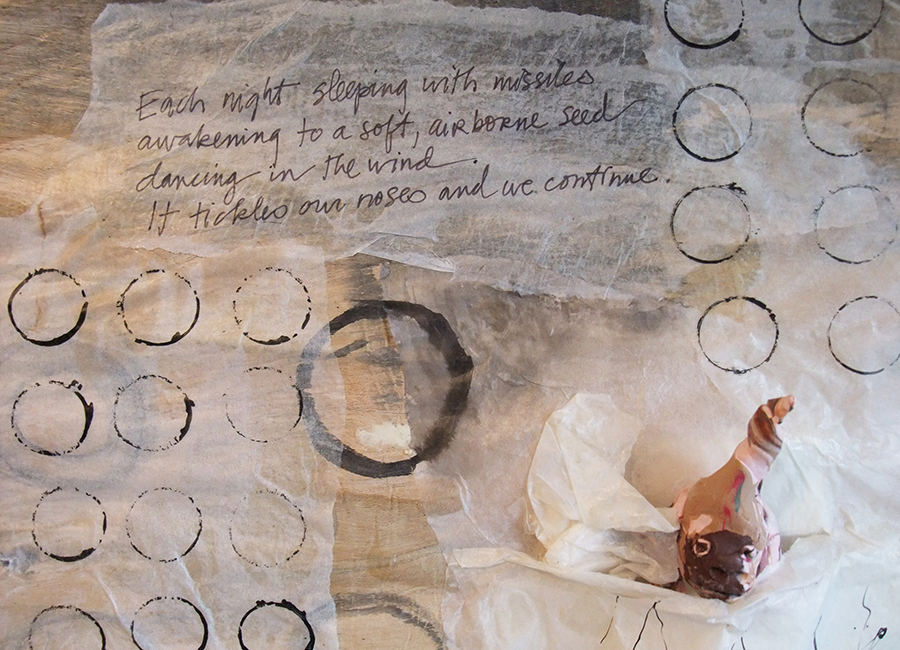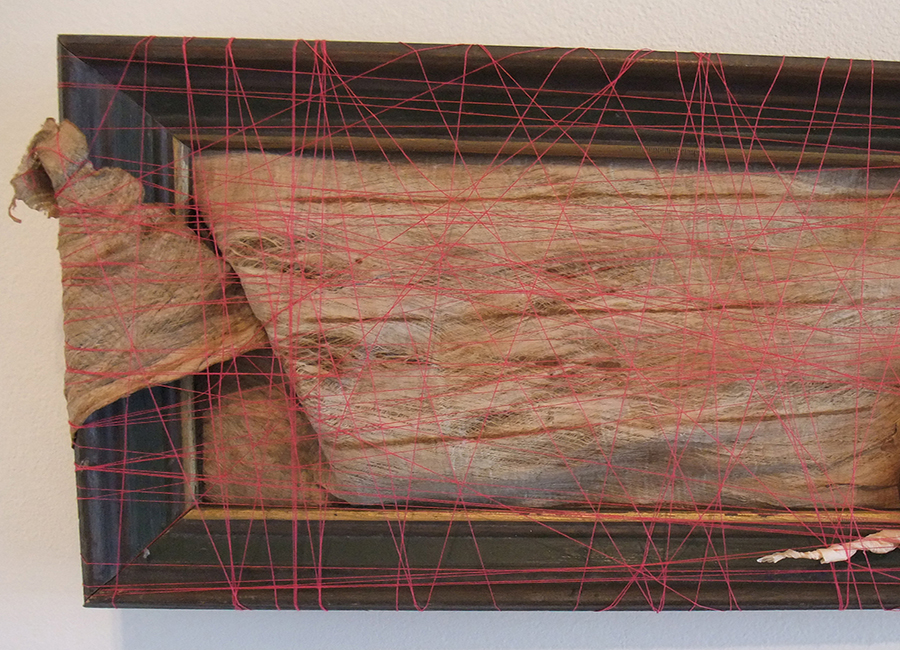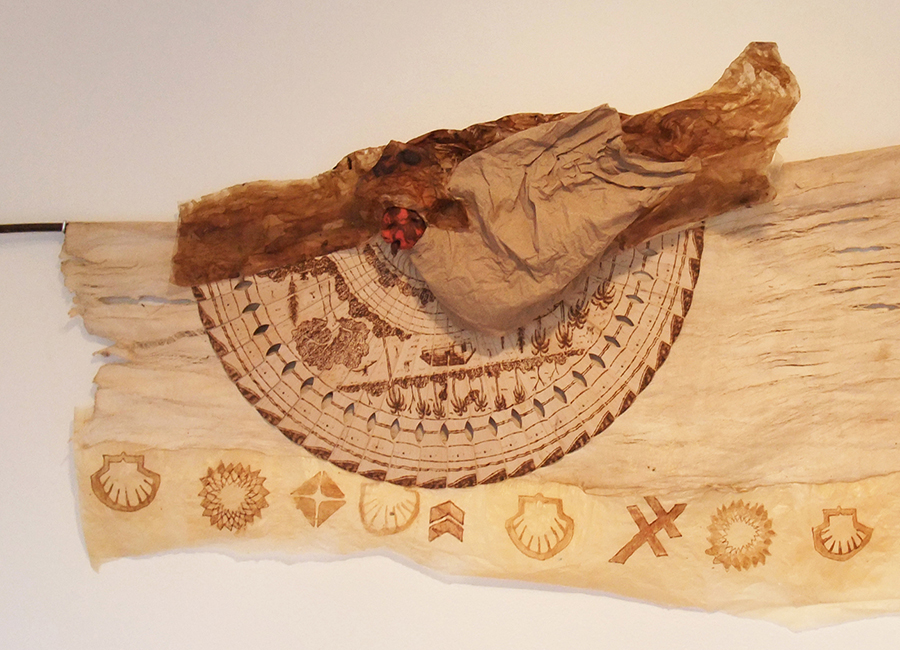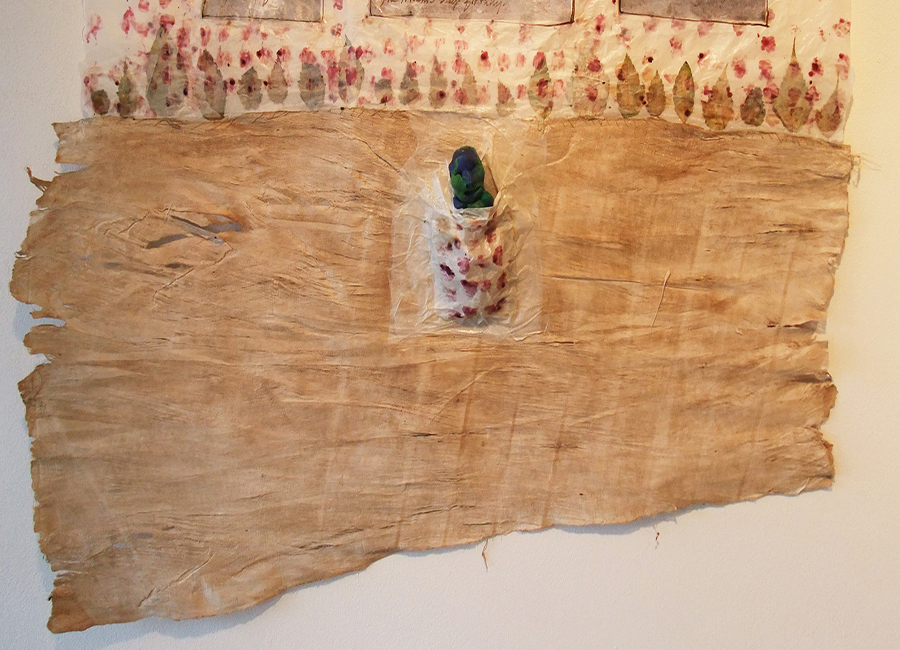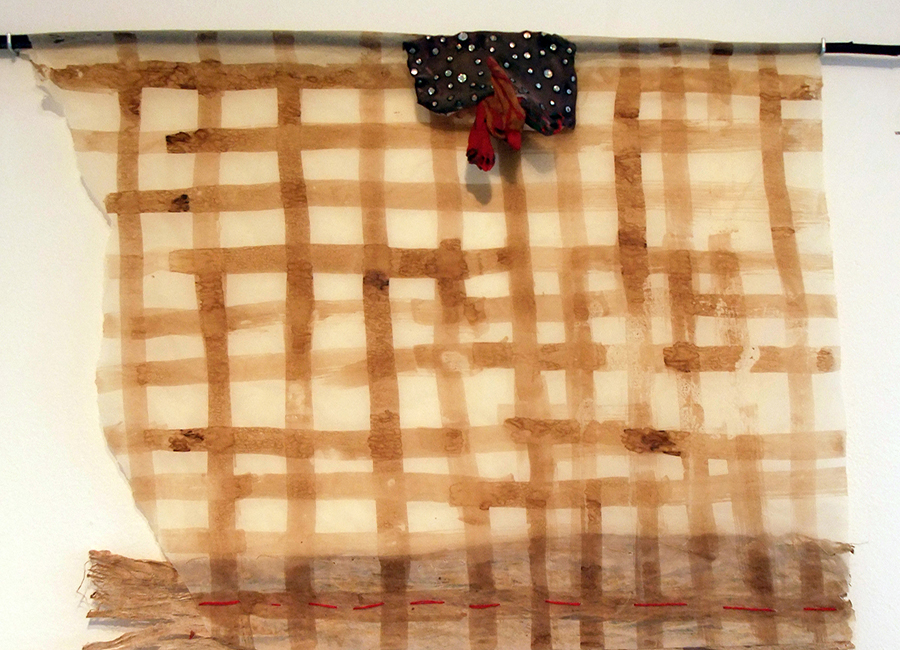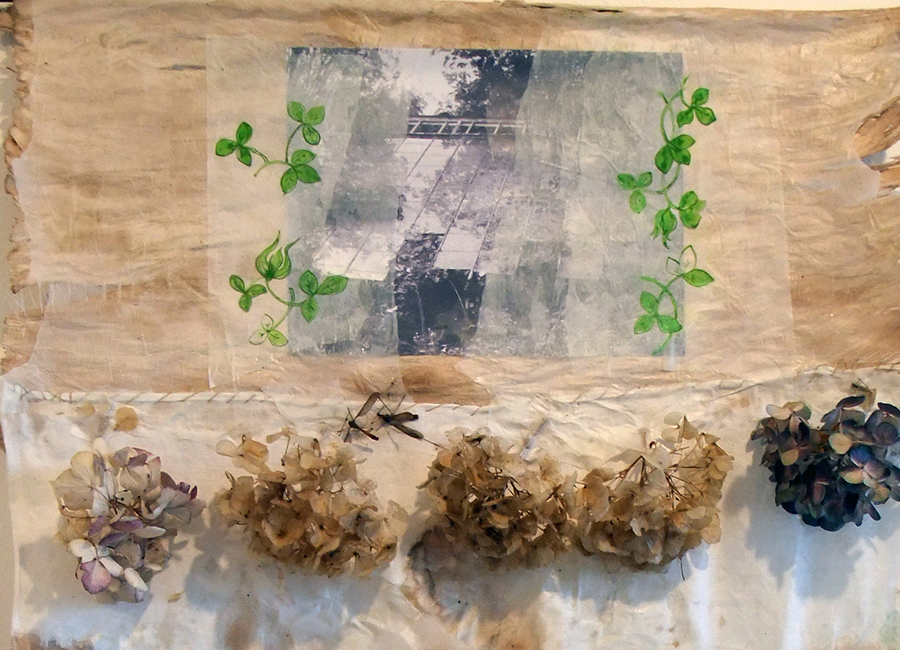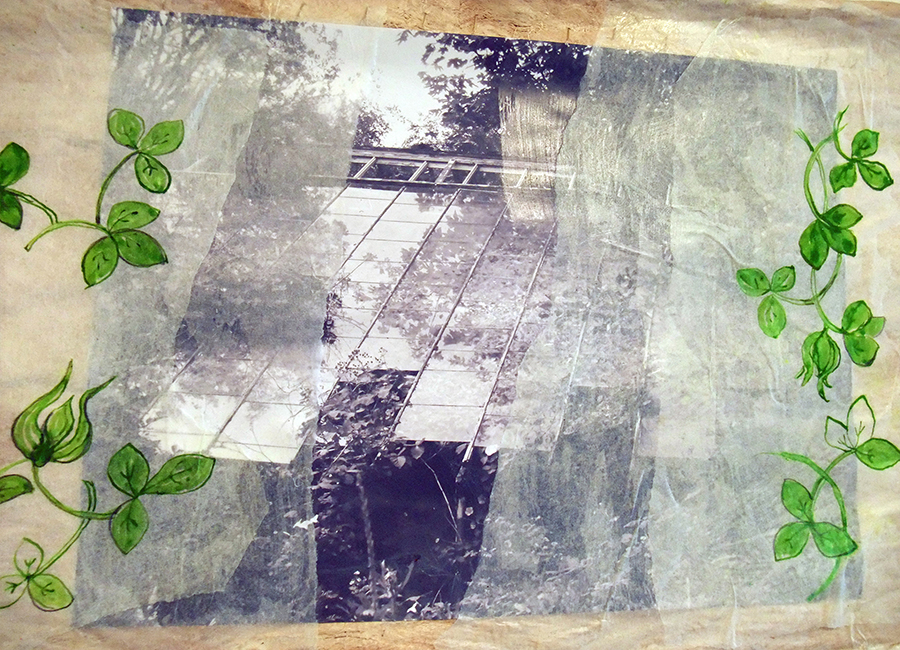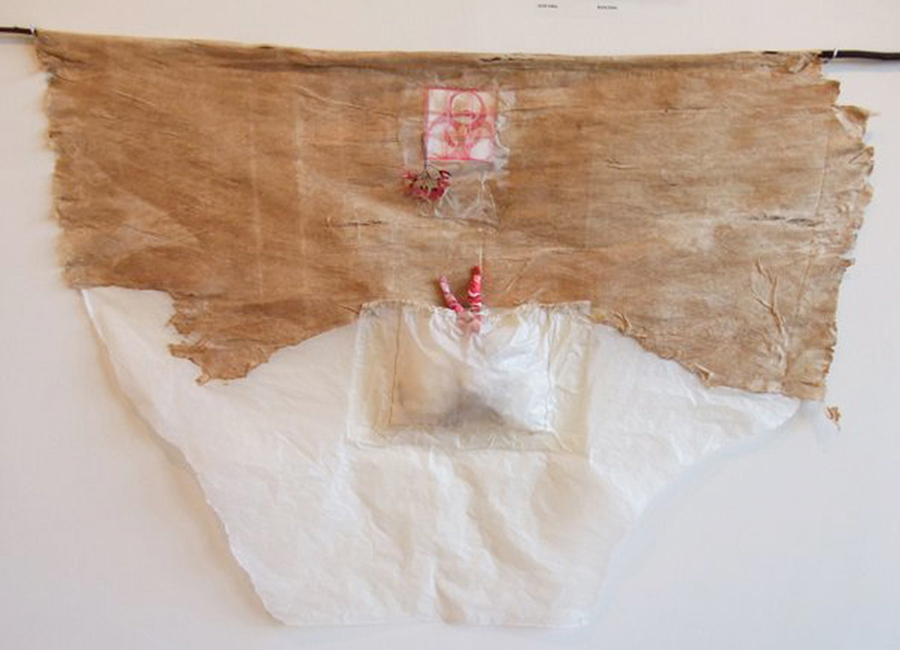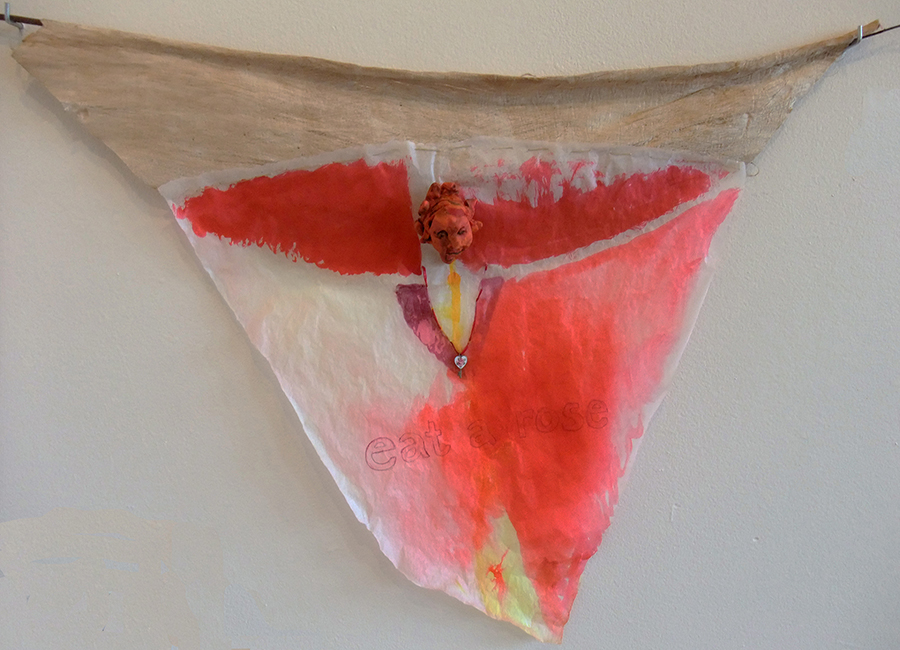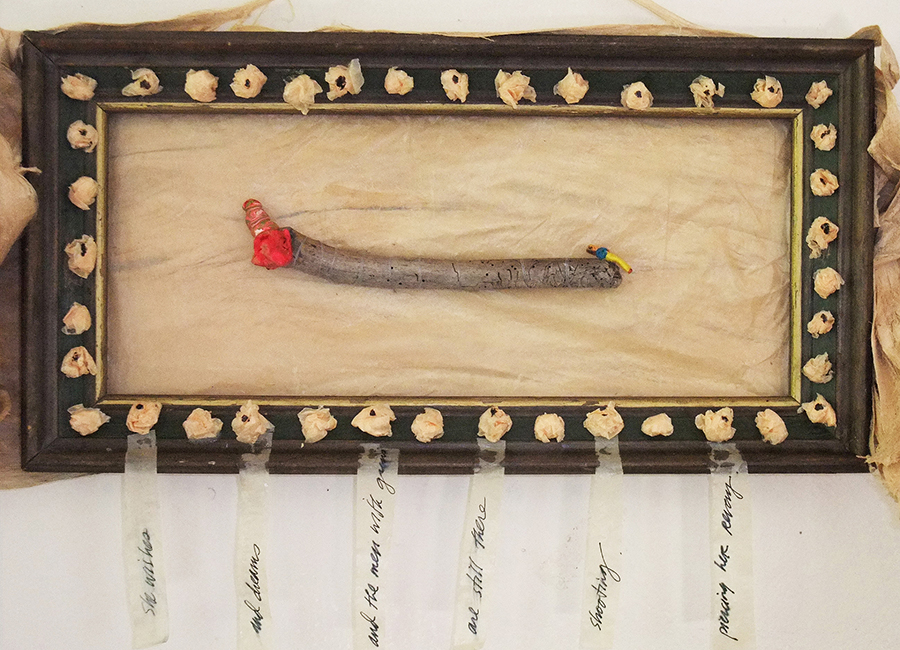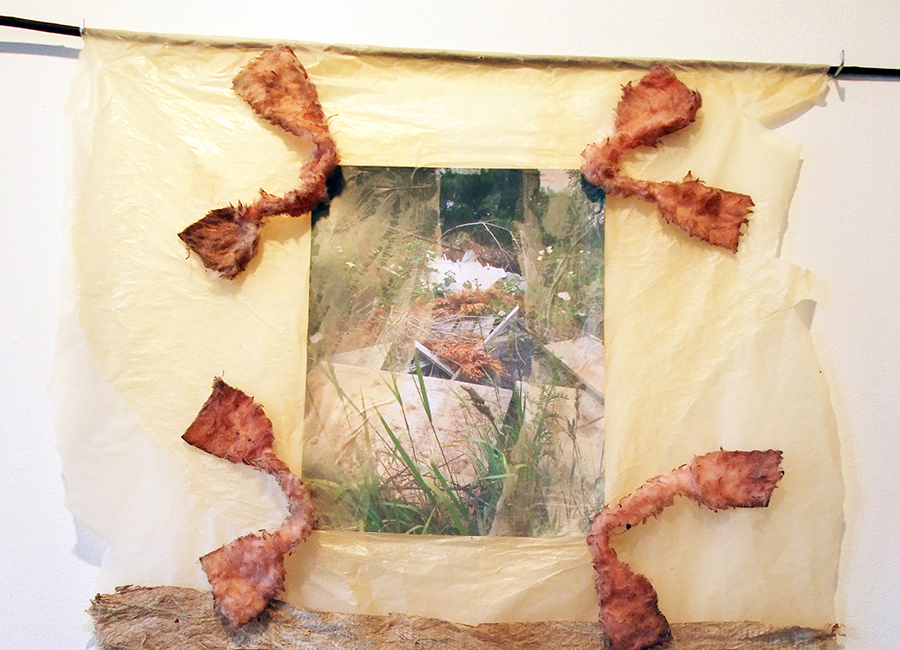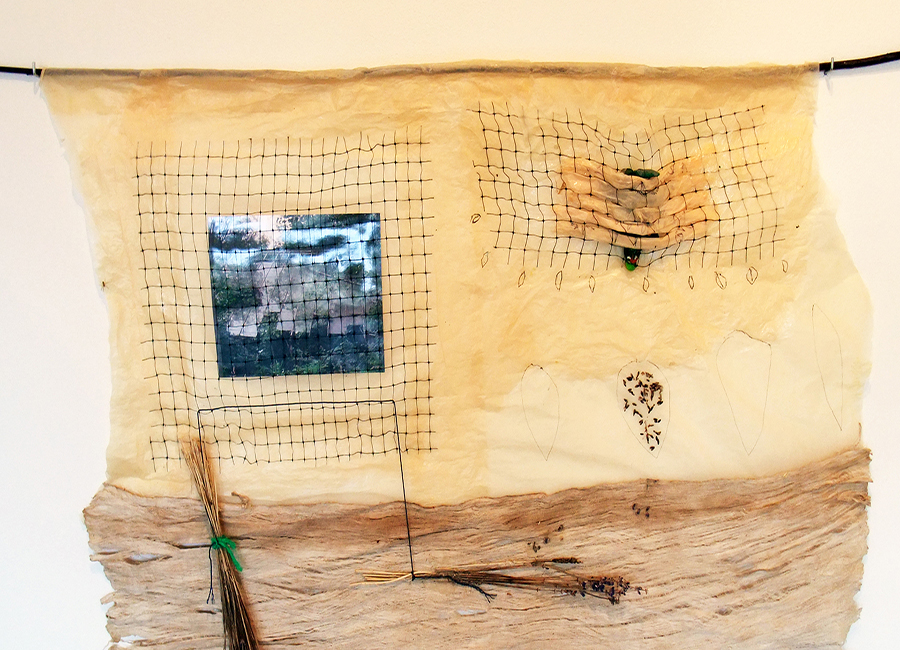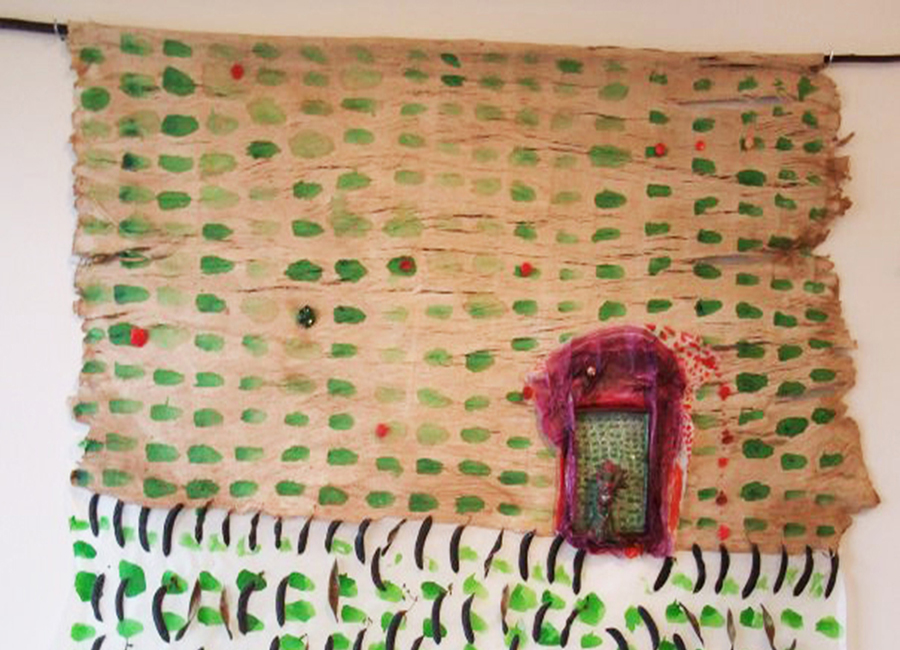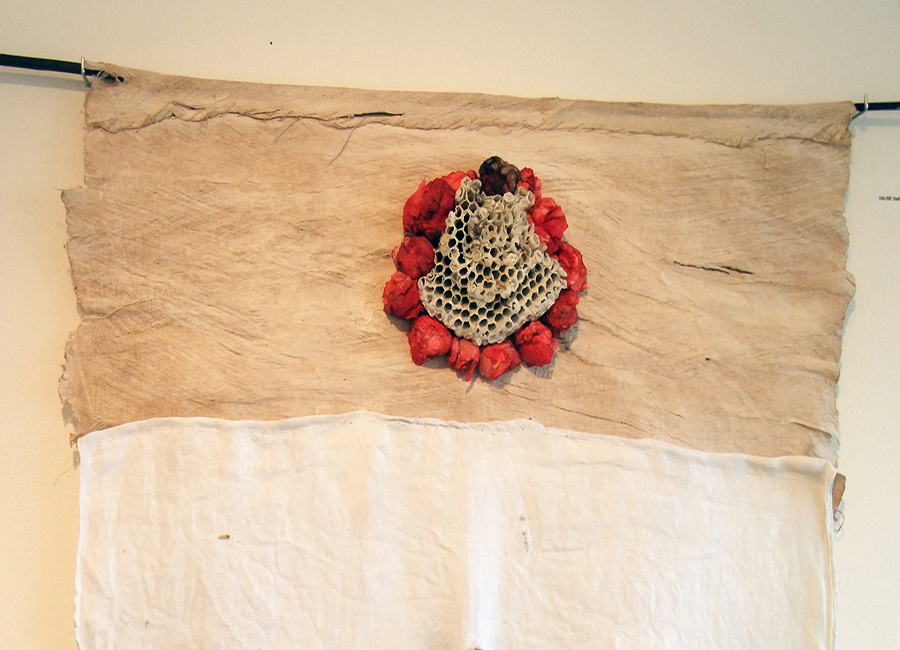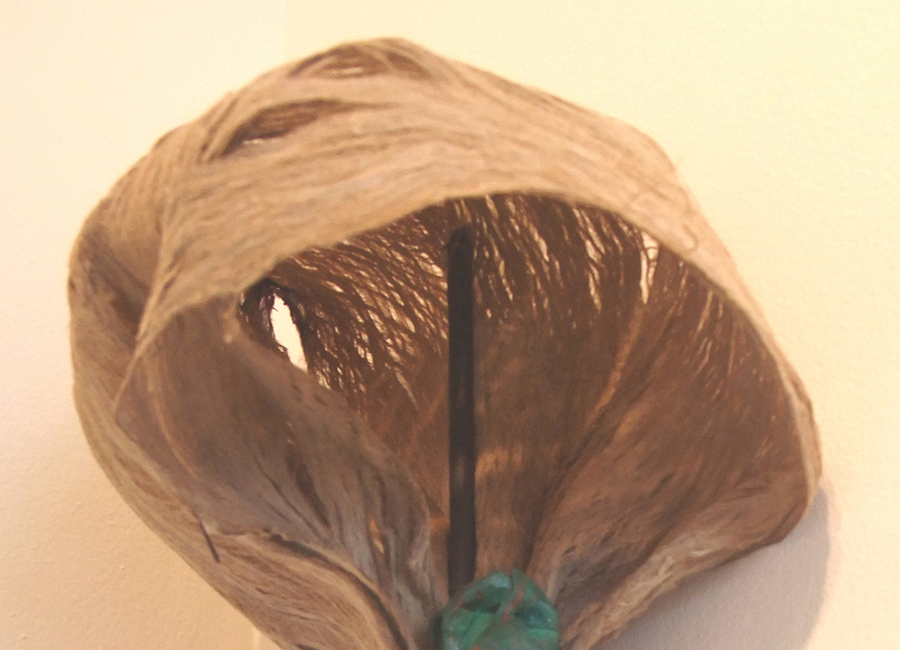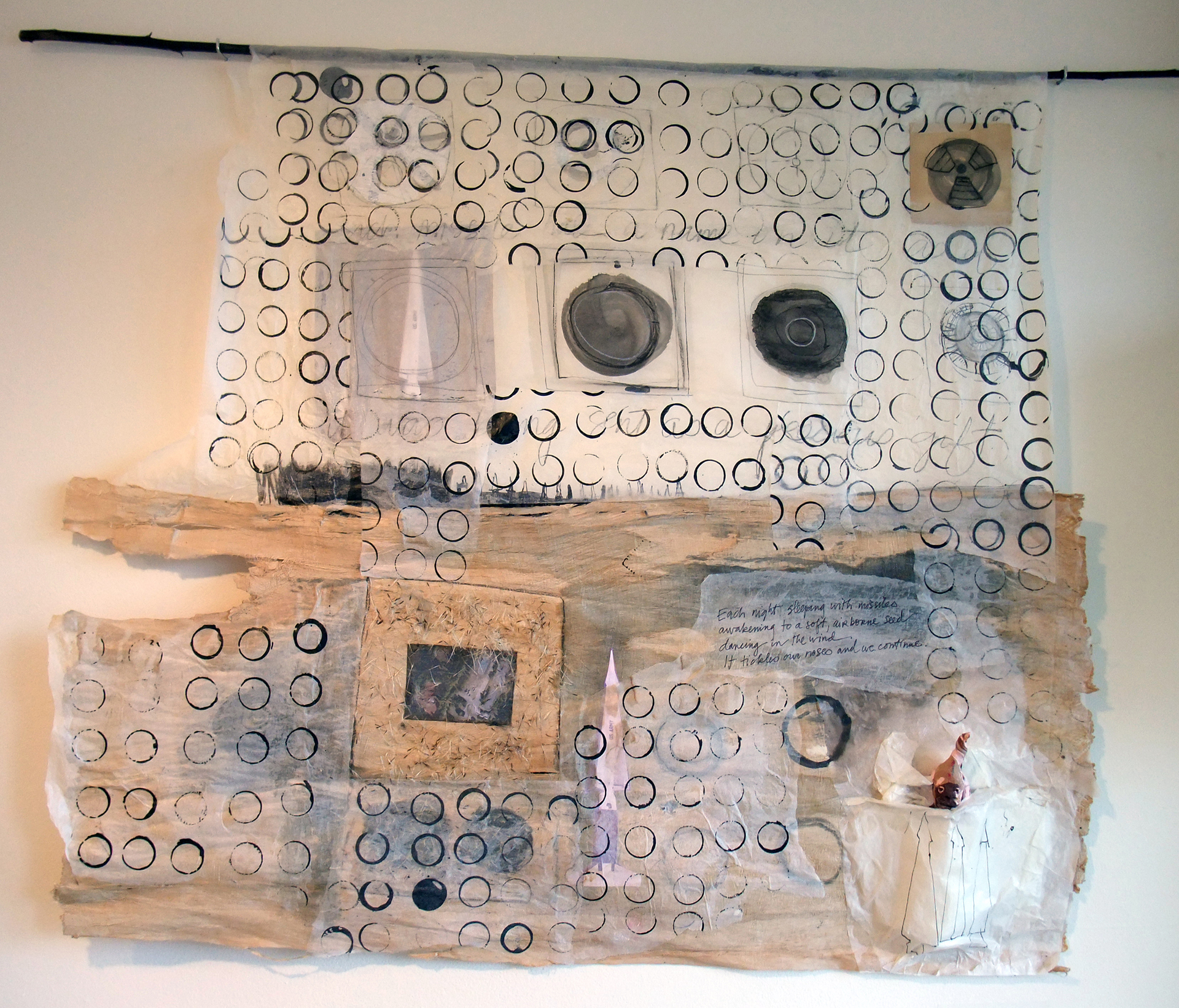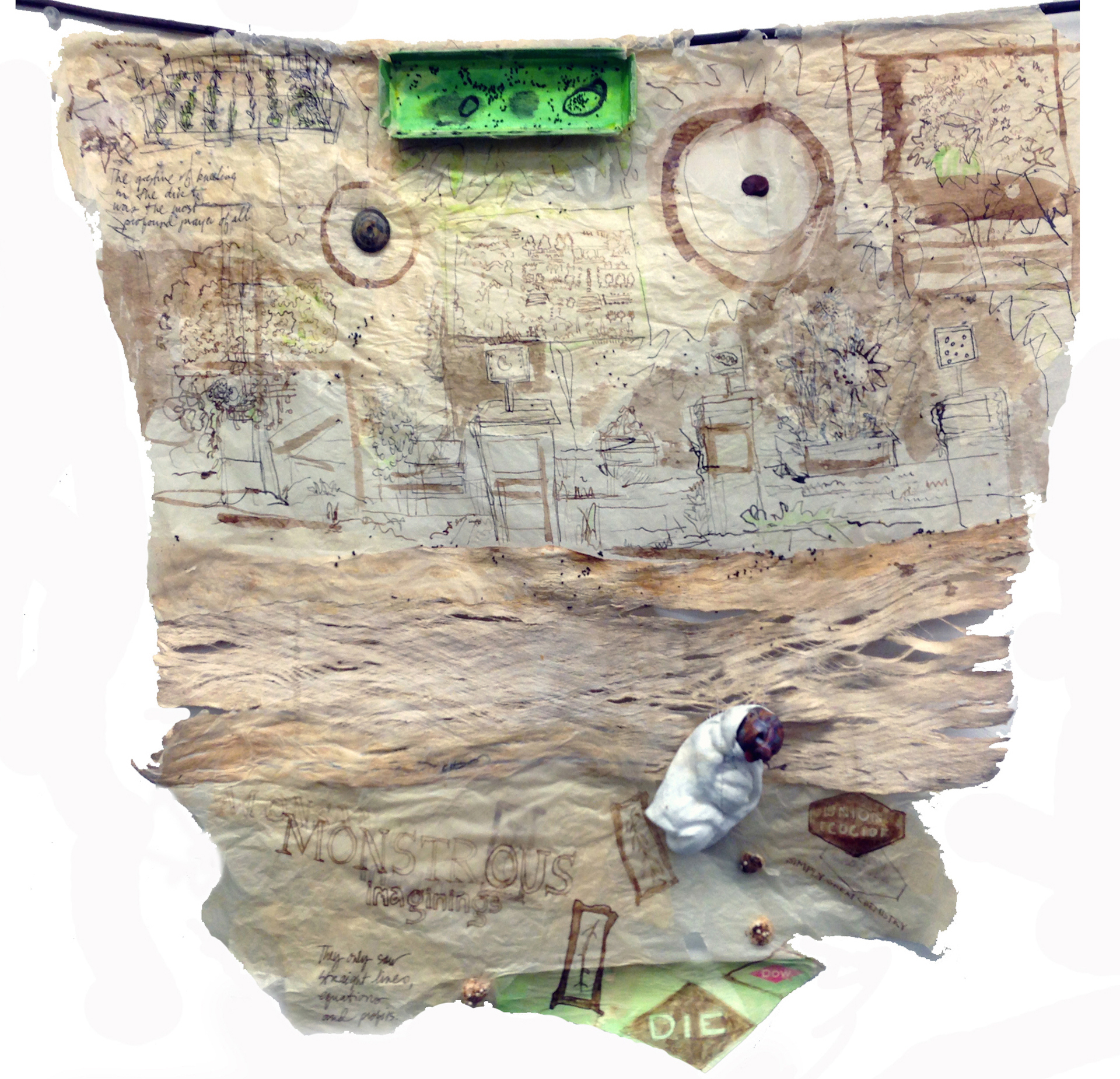underGROUND: Artifacts of the Present Moment

underGROUND: Artifacts of THIS Moment
Beverly Naidus, 2009
In June 2009 I had the privilege to work as an Eco-art workshop facilitator with colleagues who were dancers, composers, writers, performance and visual artists at Earthdance in western Massachusetts. While being introduced to the ways that these artists exposed ecological issues in their work, I was offered a deeper connection with the contemporary dance form, “contact improvisation.” One dancer described the form to me as a process of sharing weight. I participated in a Dance Jam that included a man in a wheel chair and people of different ages and sizes. Once I moved from sketching in my journal onto the dance floor, I was hooked. Excited by the liberating aspects of creating meaning through movement, something I had understood in an earlier chapter in my life, I was compelled to bring this energy back to my studio on Vashon Island.
Instead of approaching this new body of work with strategies that are well known to me, I decided instead to move through my studio space, and the adjoining woods, trails and garden, like a dancer, scavenging weight, form, color, texture and meanings within my local environment. At times I was reaching in many directions, seemingly at once, drawing, sewing, gluing, sculpting, tearing, rummaging through drawers, picking things up and moving with them, tying things together, in very unfamiliar rhythms. At other times, I found habitual gestures provided a comfortable launching pad for deeper work. The tactility of found materials and a constant shifting of weight were necessary to deal with often challenging sources of inspiration: the things that are underground, under the radar, most easily avoided, but need attention. My process allowed me to be more fluid in my emotions and less self-censoring as I unearthed imagery and metaphors that would not have been discovered through a more intellectual approach.
The results of this improvisation are a series of wall hangings and sculptures, often inhabited by small, sculpted heads and figures, animating each piece. Mulberry bark and translucent paper became skin-like forms to be pierced and sewn with stories about nuclear weapons and toxic dumps. When the difficult material became too weighty, I shifted poses and perspectives, opening up to humor and a reconstructive vision of the world, where gardens transform the muck swept under the rug for so many years. Both soft and sharp, the work has an anthropological quality, like artifacts of this present moment.
In this series, I continue to use my art to confront what is sick in our society and to remind myself of what is whole and possible, just around the corner from our fears. Ultimately my art is a meditation on the paradox of living in this time with an open heart and a conviction that the future has not yet been decided.
